A few years ago I’d heard about the Azores, an archipelago of nine islands in the Atlantic Ocean far, far, off the coast of mainland Portugal. Photos and videos teased an impossibly green landscape of rolling hills set against volcanic mountains, coniferous forests and ethereal lagoons. Touted as a hiker’s haven I was eager to get my boots on the trails, but what pushed the Azores over the edge for me was the promise of hydrangeas. Blue, white and varying shades of purple and pink in mass quantity along roadsides, down steep cliffs overlooking the bright blue Atlantic, and in quaint roadside village gardens.
As a flower farmer with nine growing seasons under my belt I am of course familiar with this cold, hard fact: Nature is in charge. Best laid plans, spreadsheets and schedules matter not one drop to the boss lady that is Mother Nature and I’ve experienced first hand plenty of her upsets like just-missed flowers for Mother’s Day, Easter, Dia de Los Muertos or any other occasion which folks crave pretty blooms for.
When the plane touches down on Sao Miguel Island towards the end of May I believe I’m walking into the start of hydrangea season.
The capital city Ponta Delgada is small and picturesque with ornate cobbled sidewalks of small black and white stones, old churches with striking volcanic rock facades, and a wide promenade along a harbor full of boats. I arrive at the start of the town’s largest holiday celebration: Festas do Senhor Cristo dos Milagres, or, Feast of the Lord Holy Christ of the Miracles. Christians from across the globe are in attendance and the streets are lively and full of music in the evening. The church in the main square which is dotted in small bulbs is lit and aglow for the length of the festival. The lights are a filigree of crosses, flowers and leaves. Large white urns of lilies and alstroemeria decorate the entrance and inside the church which is also showing off Portugal’s signature blue and white tiles, are more flowers— mums, calla lilies, anthuriums, star of Bethlehem. All throughout town balconies are adorned in flowers and evergreen from the Japanese Cedars high in the mountains. Shop windows are filled with babies breath, eucalyptus, pastel Gerber daisies and paintings of Jesus Christ on display, head wrapped in thorns.
The height of the the festival is the procession through town in which local devotees hoist a statue of Jesus onto their shoulders and carry it through the city on a decorative pathway traditionally made out of flowers. In recent years the flowers have been swapped for dyed wood shavings to save on costs, and I watch as groups of congregants use a wood template to create an intricate pattern for several kilometers across town. The festivities are beautiful and full of flowers, but I have yet to see a single hydrangea…..
After a couple days exploring the capital I rent a car and head deeper into the island. The landscape is pastoral and agrarian with an endless patchwork of cows and hay fields, corn, banana plantations and potatoes. The car winds through the crops and villages and up to a stunning hilltop church. This is where I realize I’ve arrived too early for the hydrangeas. The church sits atop a steep hill overlooking a cluster of banana plantations, orange tiled rooftops and the crisp blue edge of the sea far below. Alongside the church, embedded into the hill are large tufts of shiny, deep green foliage which I quickly realize are hydrangea bushes bare of blooms, not even the hint of a bud on them. The road to the church is also lined with barren hydrangea bushes. In fact, for the next several days I drive by endless miles of hydrangea bushes— the biggest, healthiest, bushiest bushes I have ever seen—all bare of blooms.
I console myself with the fact that I’ve got till mid June on these islands, and if luck is on my side I’ll catch hydrangeas out on Flores, the outermost island, and my last Island of the Azores which is rumored to be the most flower-heavy island of them all.
I spend the next four days driving to various hikes and miradouros—viewpoints— along the roughly 140 miles of coast line on Sao Miguel. At the lowest elevations the island is comprised of crops and cow pasture. Tall grassy meadows stretch on forever in a lush and wispy texture. I see the floppy seed heads of grasses above the unfurling fists of ferns, and the busy understory of layers upon layers of mosses. These parts of the island buzz with tractors. John Deer’s mostly, a vibrant bright green splattered in mud. Some of the hay fields are being cut and baled and I watch as the tractors’ huge scythes slice the meadows down leaving neat, fluffy piles of fresh green behind and revealing the sun-starved yellow-green where the hay is newly shorn.
Corn is just coming up all across the island. The tiny, tender shoots are a whisper of translucent green. They poke out of the bare, brown soil and stitch steady, obedient lines across the farmland. The potato plants are further along and tossing up their delicate white blooms. The roadways along the coast are lined with gorgeous Sycamore trees whose silver-green leaves are just unfurling. Agapanthus, with its sturdy, tropical elongated leaves is just starting to burst open into giant white and purple star-like orbs.
The coastal cliffs stretch up dramatically from the sea. The rocks closest to the water have been beaten bare by wind and water, but the tops of the cliffs have a clinging layer of determined green. Here the grasses and vines and plants look weathered, like some of the green has been strangled or stressed out of it by relentless storms and sea spray.
Driving inland the green shifts. Meadows and crops disappear and huge conifers tower over the road. The largest Douglas Firs I have ever seen loom high above the narrow, winding roads. In the shade of the forest the green below looks lush and damp. Vibrant green moss covers trunks and limbs. Maidenhair ferns, lacy and pale green, cling to damp rocks. Lichen in gray-green and lime-green tones grip decaying logs. The moss is a plush carpet-thick mix of evergreen and chartreuse.
The island’s interior boasts several lagoons, each in shades of green thanks to an over-abundance of algae. While you wouldn’t want to swim in the lagoons, the views from the rim of the tree covered mountains circling them is stunning. The lagoons are the result of extinct volcanic craters, and when the sun hits the water you are treated to hues of true green and blue-green and teal green. Under the fog and cloud cover which enshrouds the interior often, the lagoons look like huge cauldrons of split-pea soup.
The only tea plantations in Europe are found on Sao Miguel and I spend an afternoon walking the steep hills above the ocean where the tea plants thrive in a long, continuous stretch of groomed bushes that create a pattern of beautiful stripes across the landscape. I learn that just the newest growth of the bushes are harvested— the top 3 leaves. The growing tip, which is fluorescent green, contains the highest concentration of caffeine, and the lowest leaf of the trio which has had the most exposure to the sun contains the least amount of caffeine. The new growth is harvested continually from April to September when the plants ( which I’m delighted to find out are actually in the camellia family!) put out a flurry of small, white blooms.
On my last day on Sao Miguel the sky opens up and pours down rain pounding all the colors a deeper hue. It doesn’t seem possible, but all the green becomes even more green. I’m not over missing the hydrangeas, but so much green always fills me with hope, its like a promise of what’s still to come.



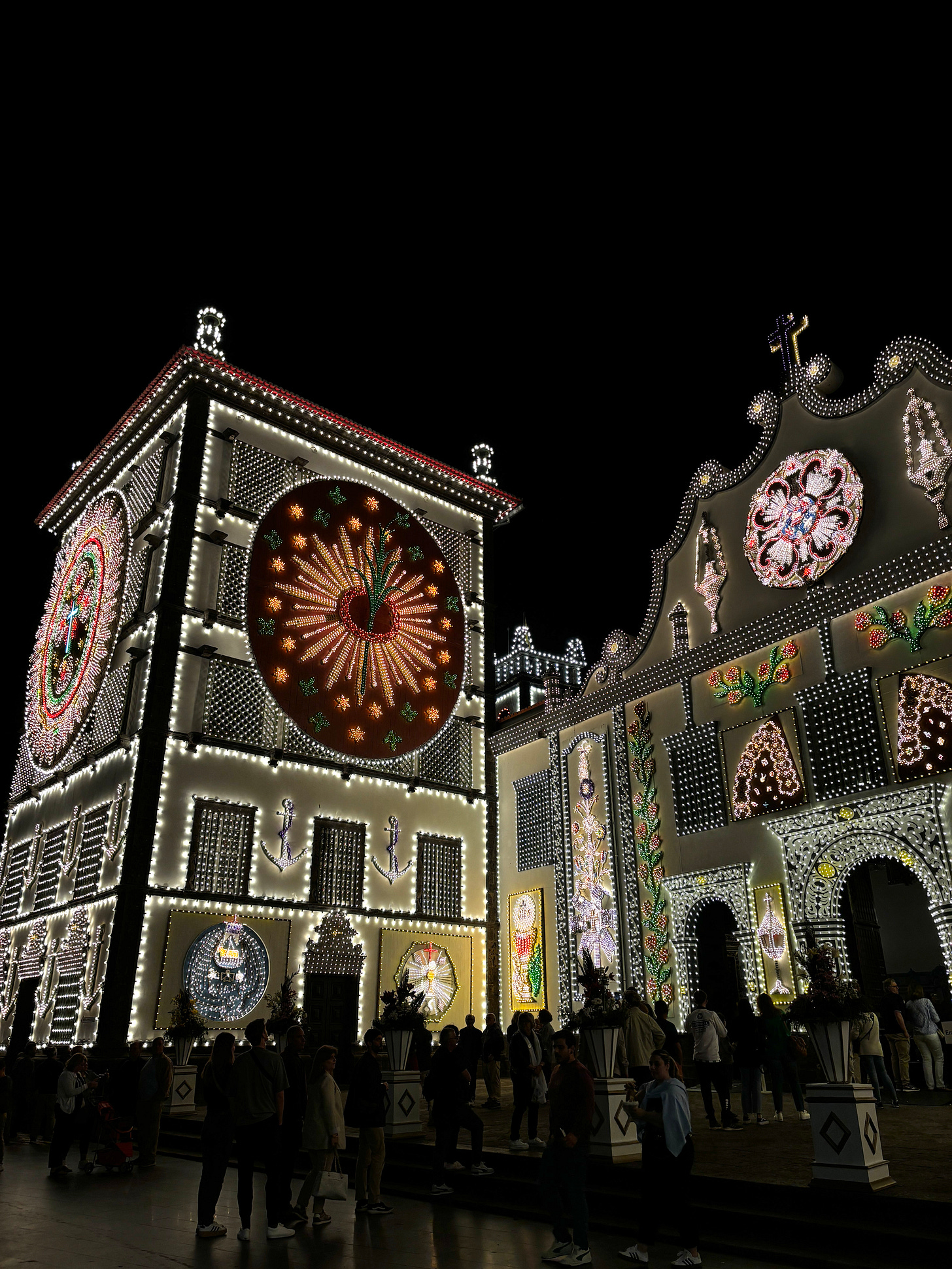

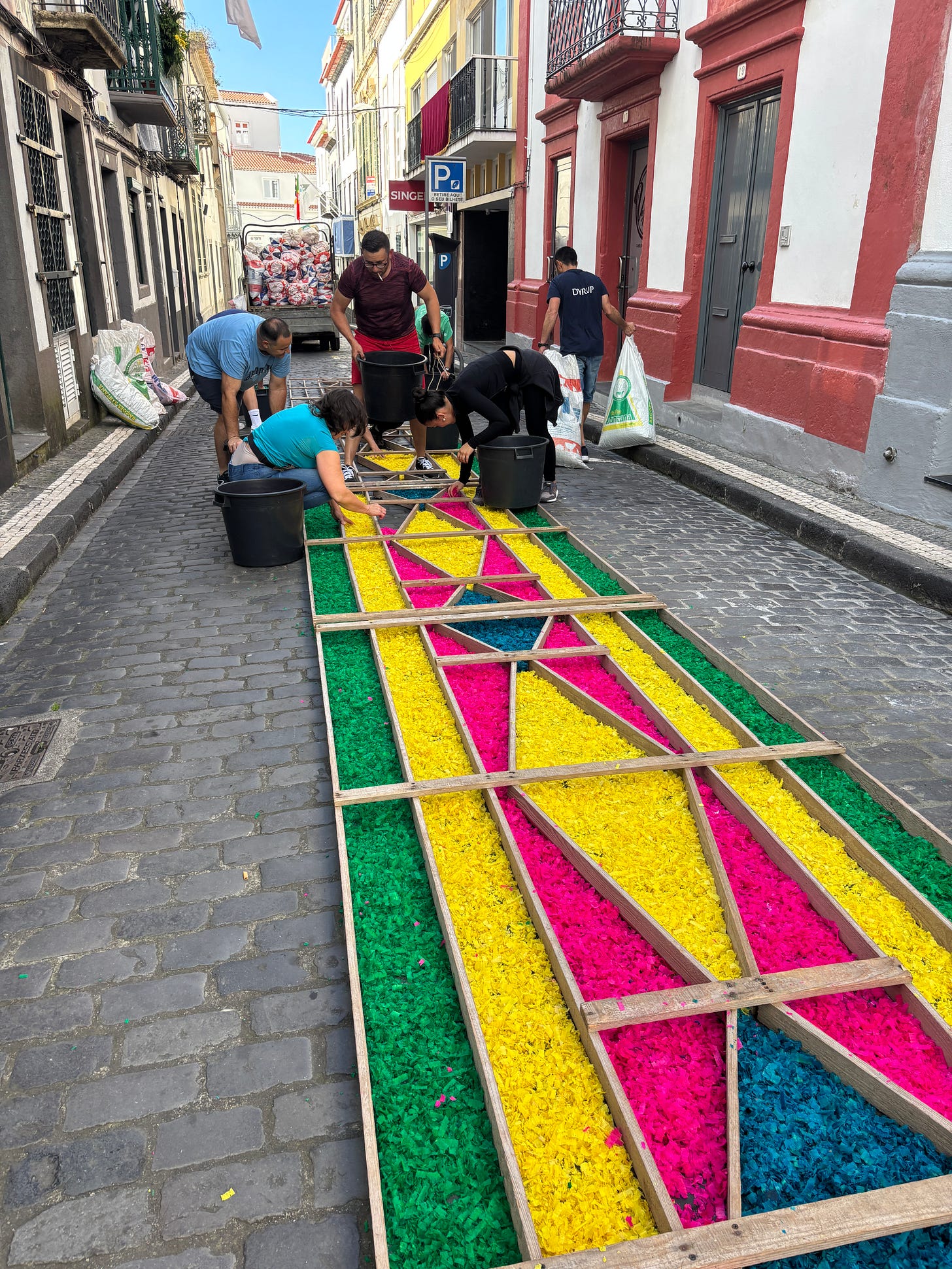
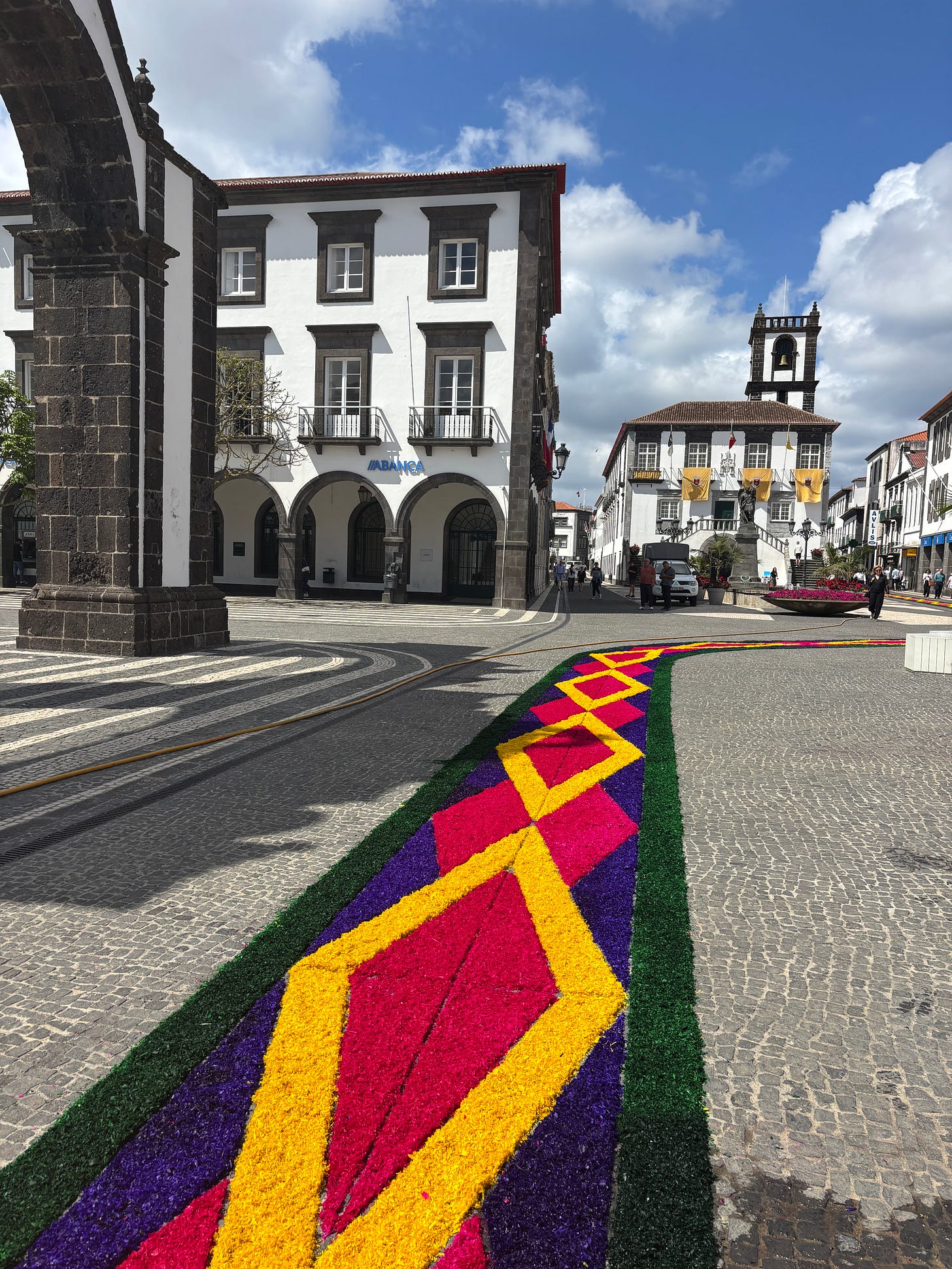
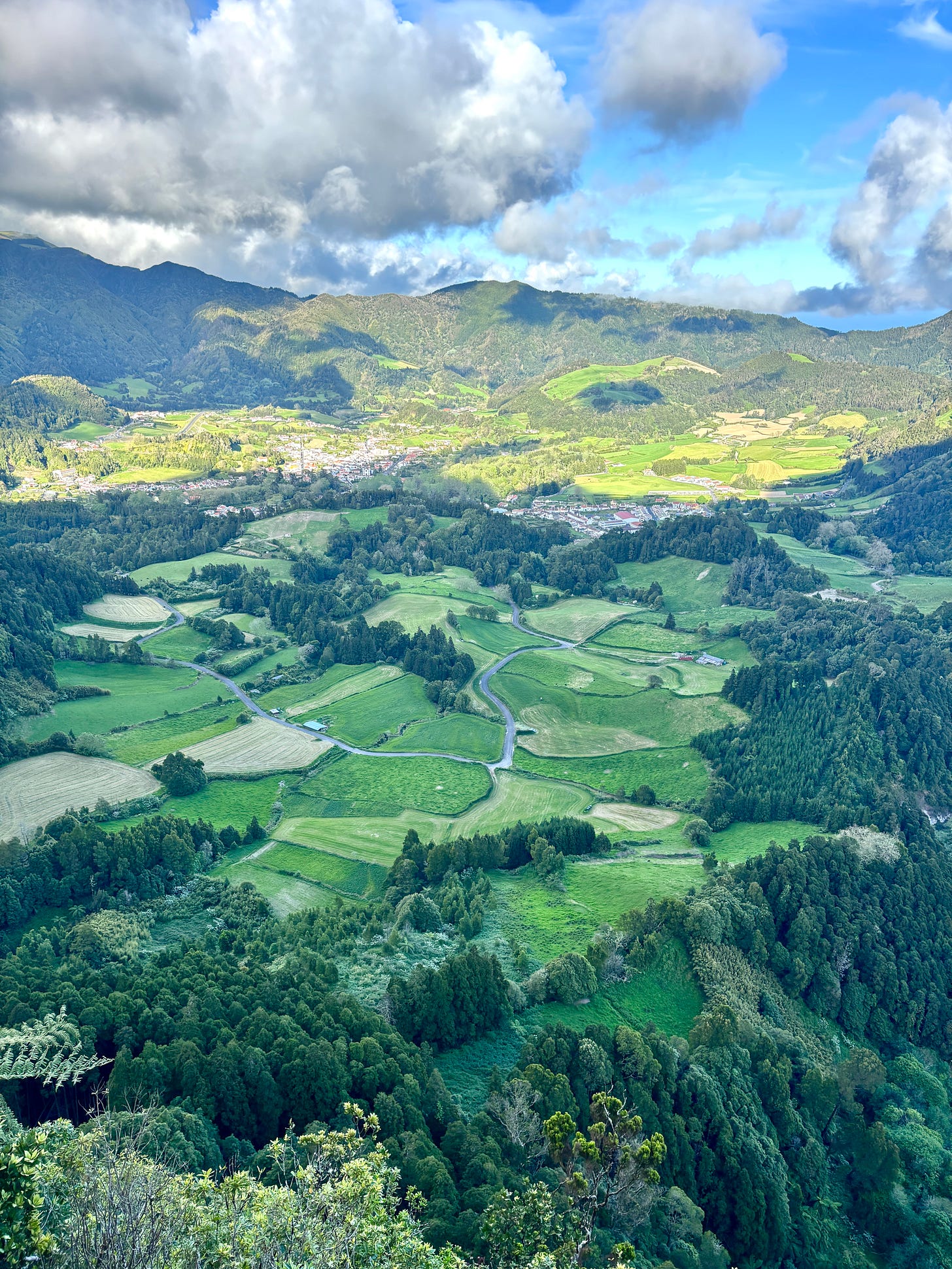
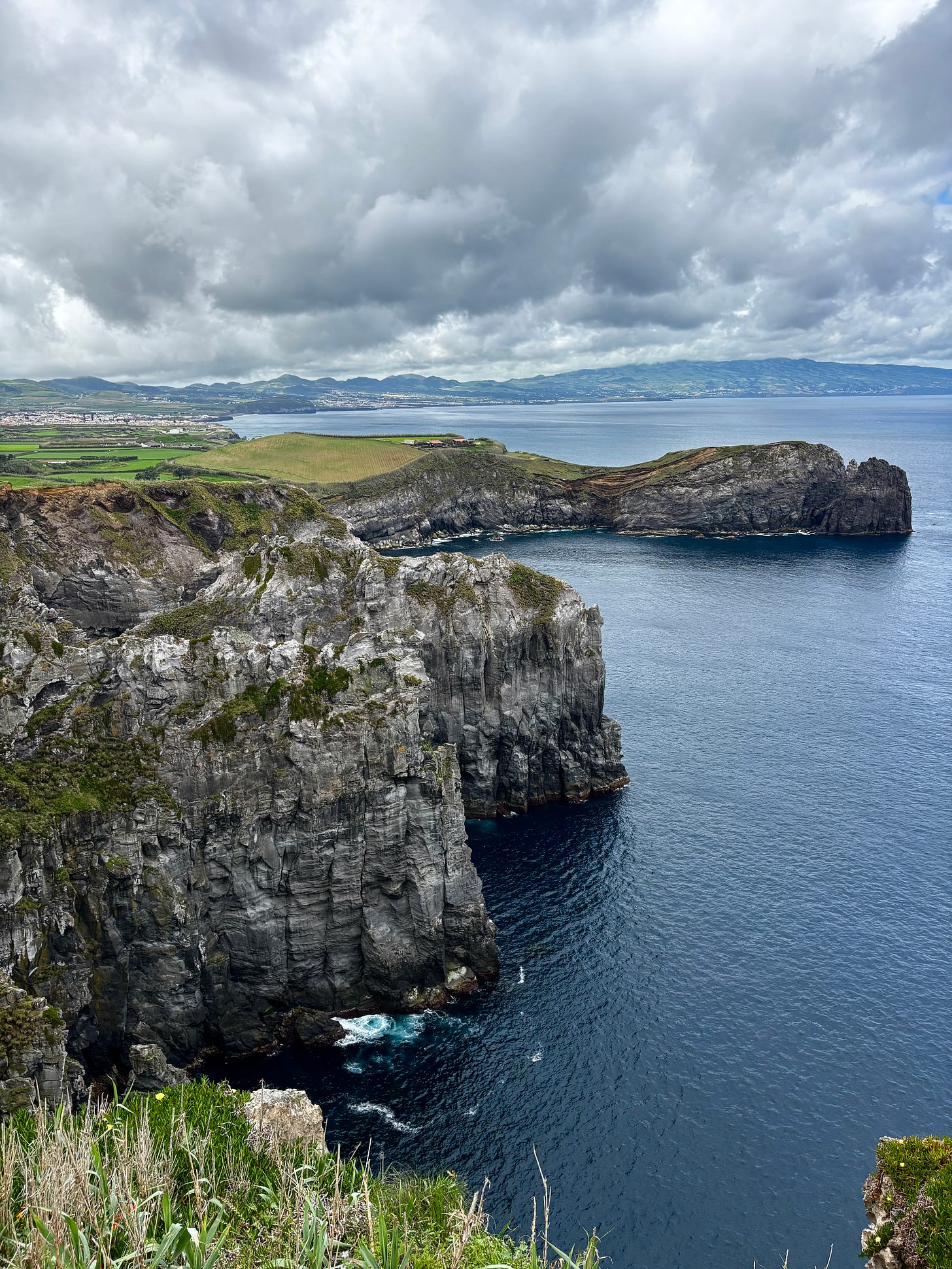
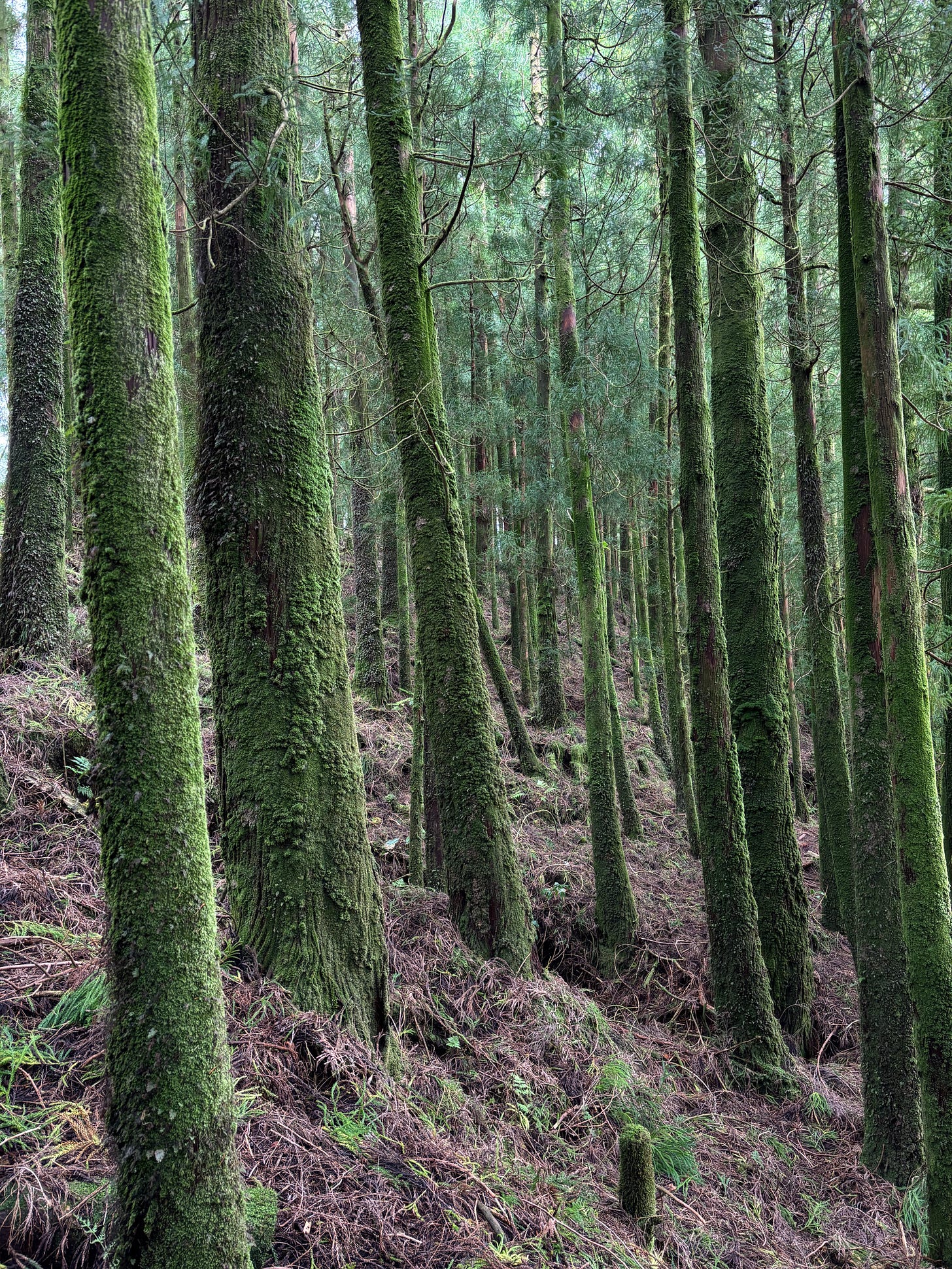
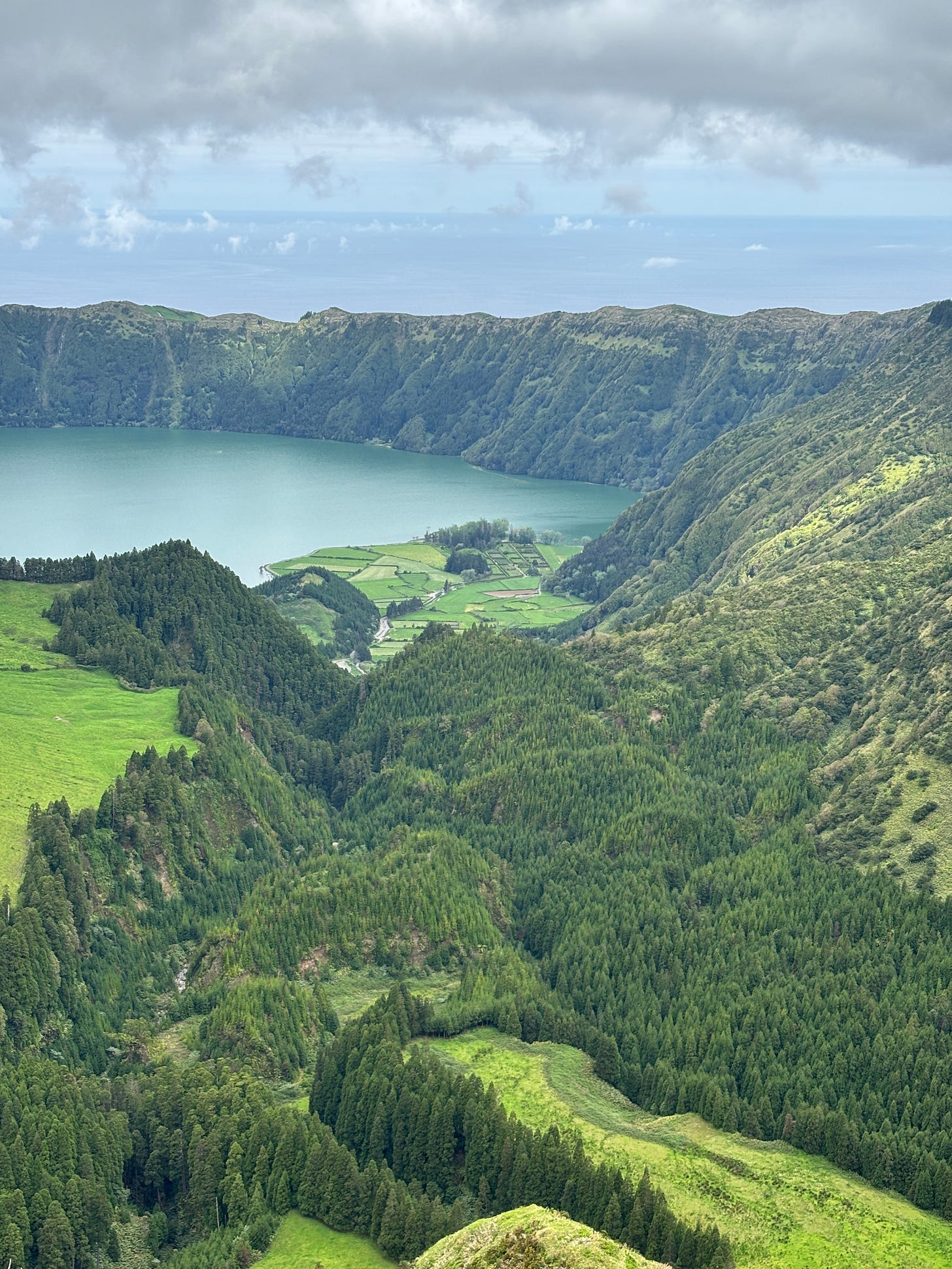
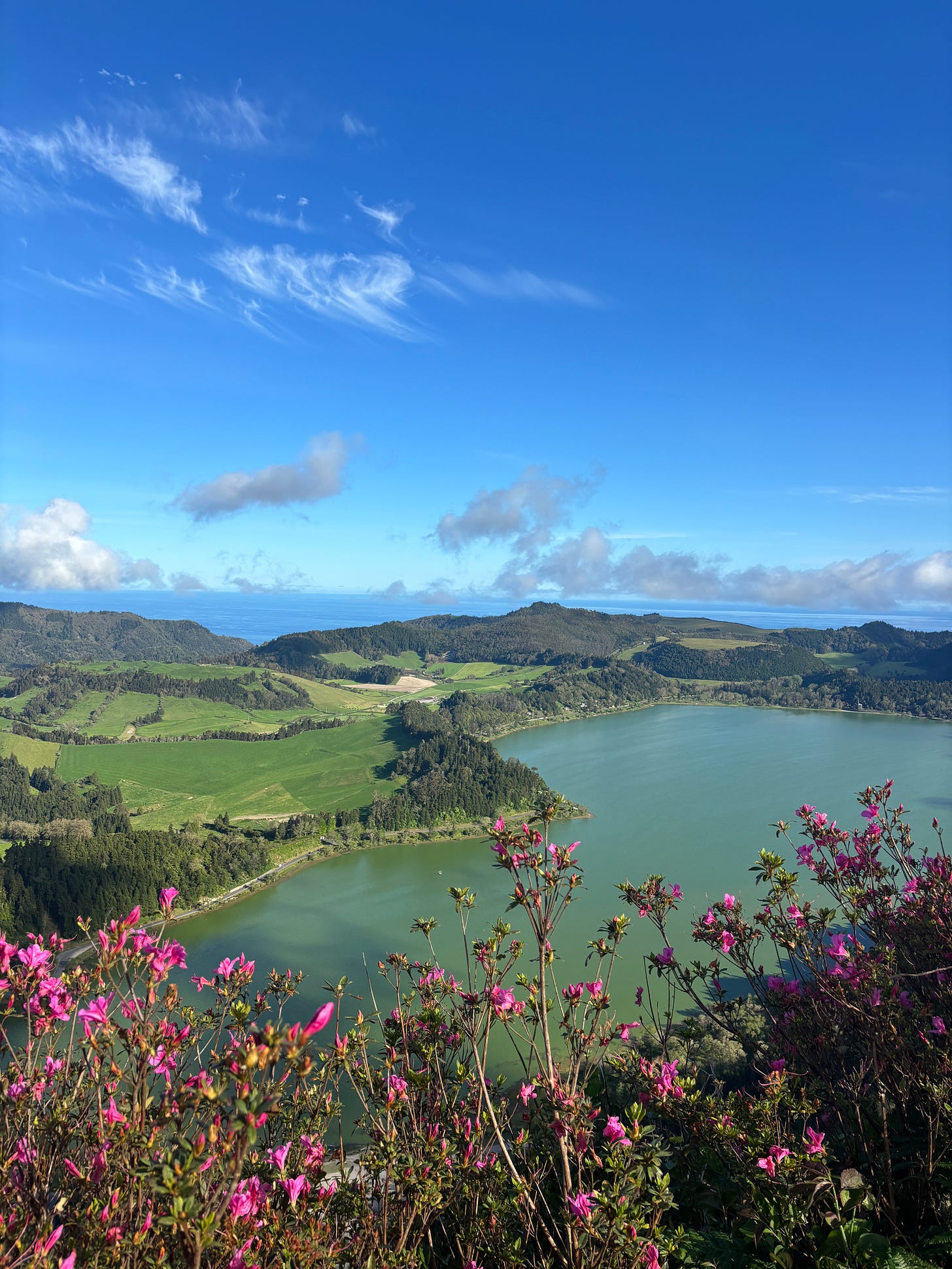
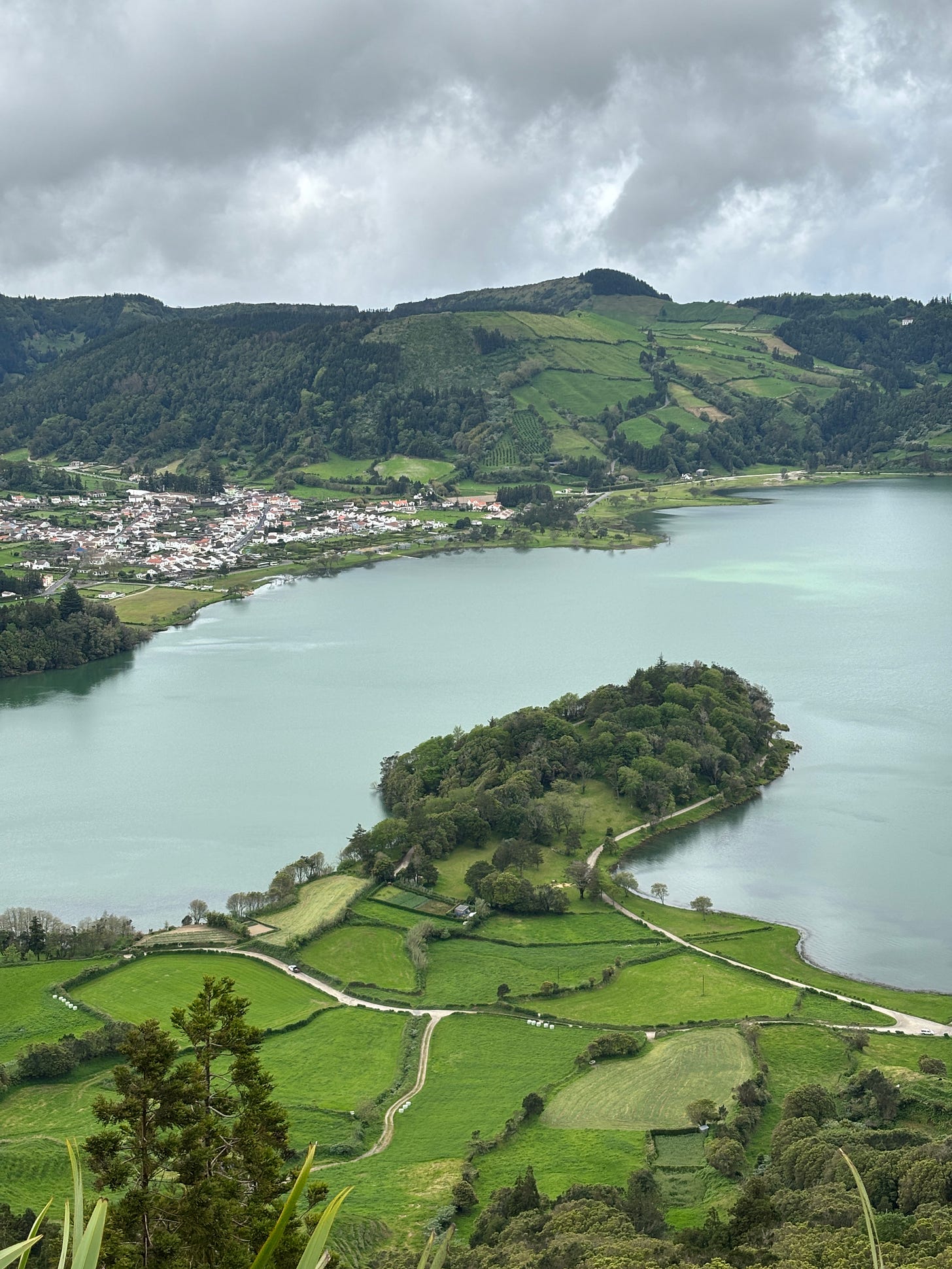
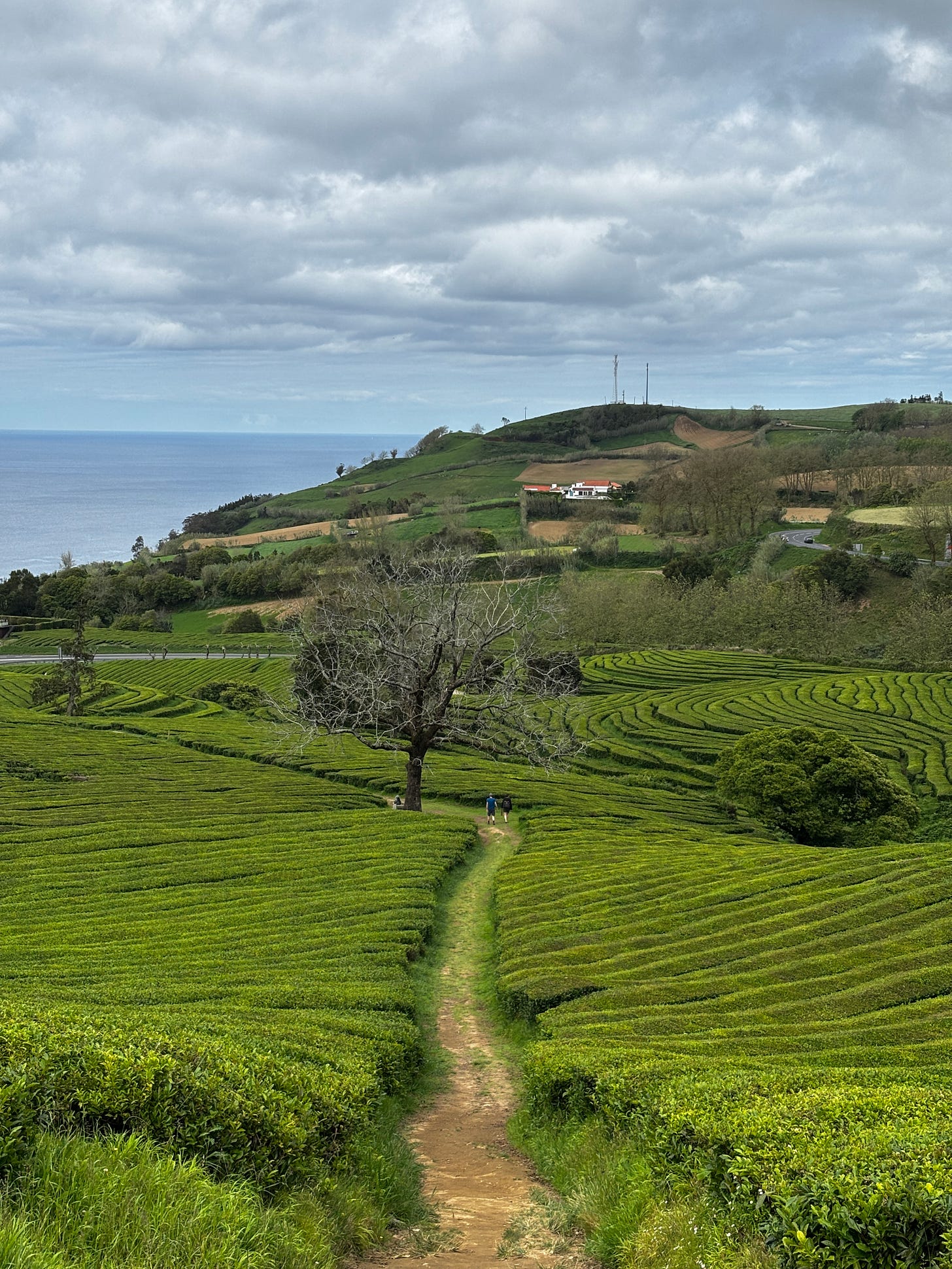
It's soooo pretty!